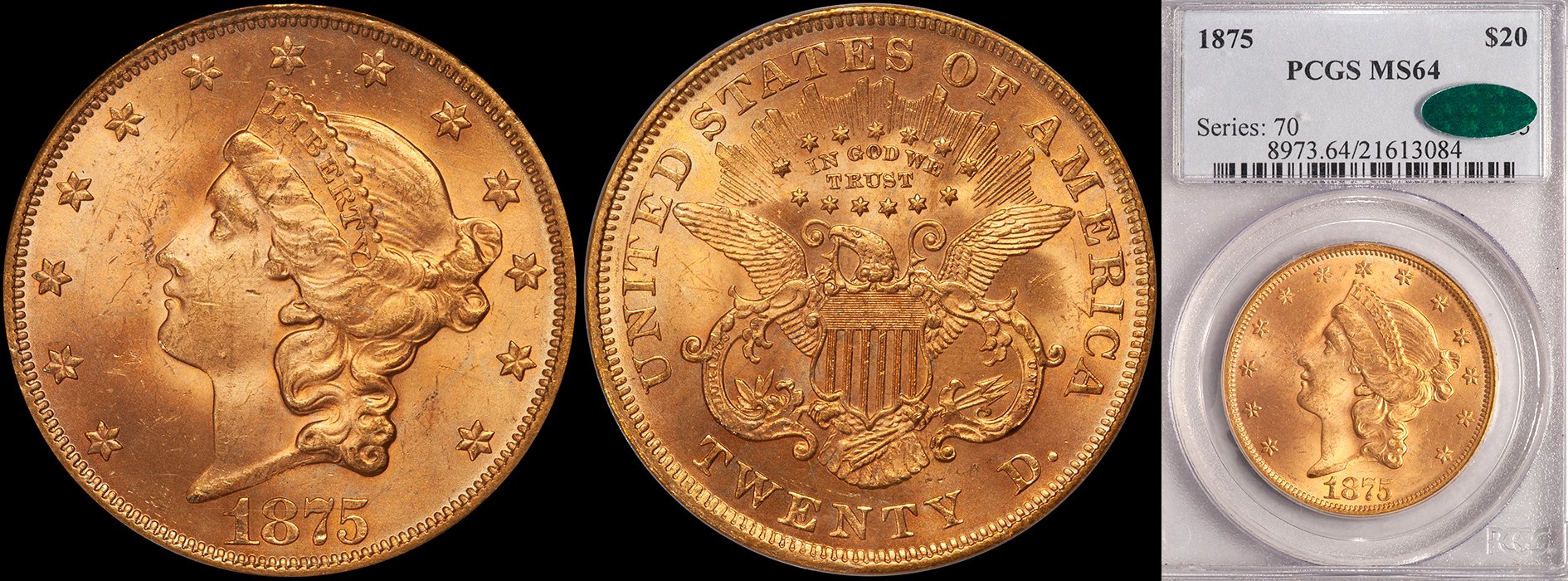The "Warehouse" Theory of Coin Investment
/As anyone who knows me will be quick to point out, I do not generally sell rare coins as an investment. Stocks and bonds are an investment; rare coins, in my opinion, are a collectible that have the potential to appreciate in price if a purchase is approached with the mindset of an intelligent collector. But lately, I have come to realize that there probably is a good way to make money buying coins with a short-term focus. This approach is what I call the "warehouse" theory.
The gist of this theory is simple. There are certain coins that are always in demand. For example, whether the coin market is good or bad, everyone wants a Stella or a Chain Cent. What if you owned a few nice examples of these ultra-popular coins and the market had to come to you instead of the usual you-go-to-the market scenario?
Here's a classic example of the warehouse theory in action. One of the most popular branch mint gold coins is the 1854-D Three Dollar gold piece. In the higher About Uncirculated grades this is an expensive but continually in-demand issue.
For a variety of reasons, an uncommonly high number of AU-55 and AU-58 1854-D Three Dollar gold pieces were available in late 1999 and early 2000. In fact, enough were available (in this case approximately six or seven pieces), that prices "overcorrected" for this issue and fell 20%. An NGC AU-58 1854-D Three Dollar gold piece, which had once been worth $35,000-$40,000 wholesale, was now only worth $28,500-$31,500 in the wholesale market.
It was my opinion that at the new price levels these 1854-D Three Dollar gold pieces were great values. The ideal strategy was to buy every piece that was available at the cheapest price, hold them and wait for their level of demand to return. And when it did return, there would be no coins available--with the exception of the pieces I had put away.
My solution was to call a client of mine and explain the situation. While he is primarily a long-term collector, he saw the interesting situation that these coins presented. So he gave me the go ahead to purchase all the coins I could find. Within thirty days I had bought four 1854-D Three Dollar gold pieces in AU-58 at an average cost of $29,000.
Four or five months later, I started getting phone calls from other dealers searching for high grade 1854-D Three Dollar gold pieces. Some were aware that I had bought a few; others called me due to my reputation as someone who either owns important Dahlonega coins or knows where they are at. I was able to sell all of the coins I had purchased in the $31,000-$33,000 range.
Here are some suggestions about how to approach this theory:
1. Select coins with a traditionally high level of demand
There are certain coins that have been popular for many decades and will continue to be popular. There are a number of reasons for the popularity of these coins: first-year-of-issue status, low mintage figure, historic significance or attractive design. Examples of gold coins that fit into this category include: 1855-C and 1855-D gold dollars, 1861-D gold dollars, 1796 No Stars quarter eagles, 1808 quarter eagles, 1854-D and 1854-O three dollar gold pieces, Stellas, 1795 half eagles, etc.
2. Avoid popular but overly available coins
A warehouser might consider "putting back" a few High Reliefs. While there is no denying the great popularity of this issue, they are too easy to locate. Since anyone who ever wants a High Relief can find one with no problems, having a stash of a half dozen pieces will not create a ripple of excitement in the market.
3. Work with a dealer who specializes in what you are warehousing
In order for a warehouse investment to work, it is important to choose a dealer who has good connections; both on the buying and selling end. Let's say that you have decided to warehouse 1893-S Morgan Dollars in Mint State-63. Unless your dealer is a specialist in this area and knows which collectors are looking for these coins, he serves no real purpose. On the other hand, if he has a strong collector base, the chances are excellent that he will receive regular phone calls from collectors and other dealers who are looking for nice 1893-S dollars.
4. Keep it quiet
With the exception of you and your dealer, you should refrain from telling anyone else about your plans.
5. Have a plan and stick to it
If you have decided to warehouse three examples of an expensive, rare coin, don't let your dealer talk you into more. And establish sell levels before you buy any coins. Let the dealer know that you want to make X% of money on each coin. But don't be greedy and miss out on a potential sale of an expensive coin because you want to make an extra $500.









